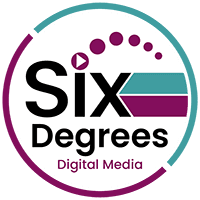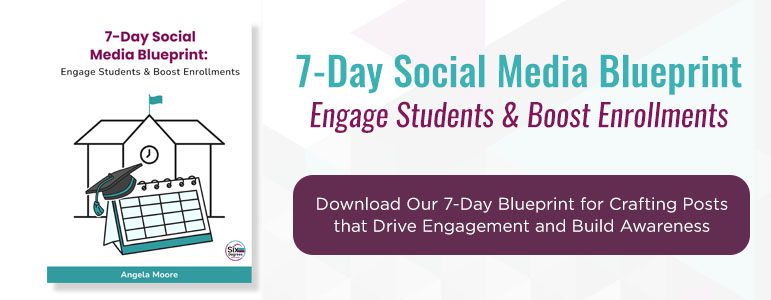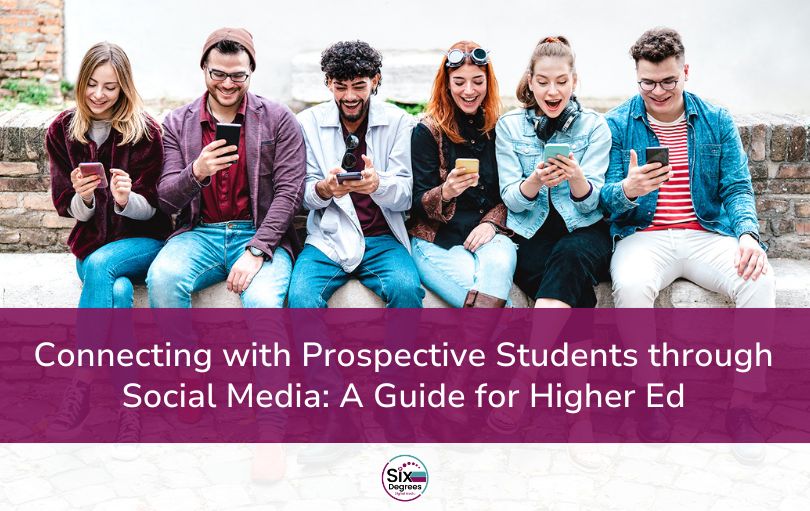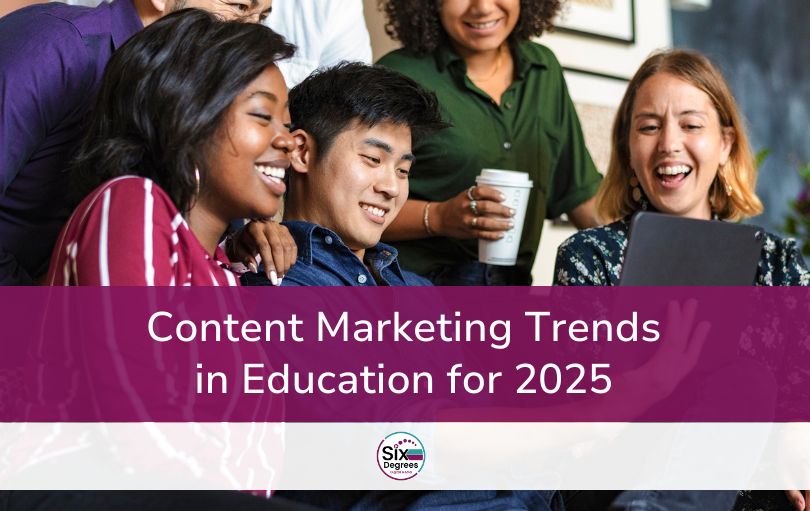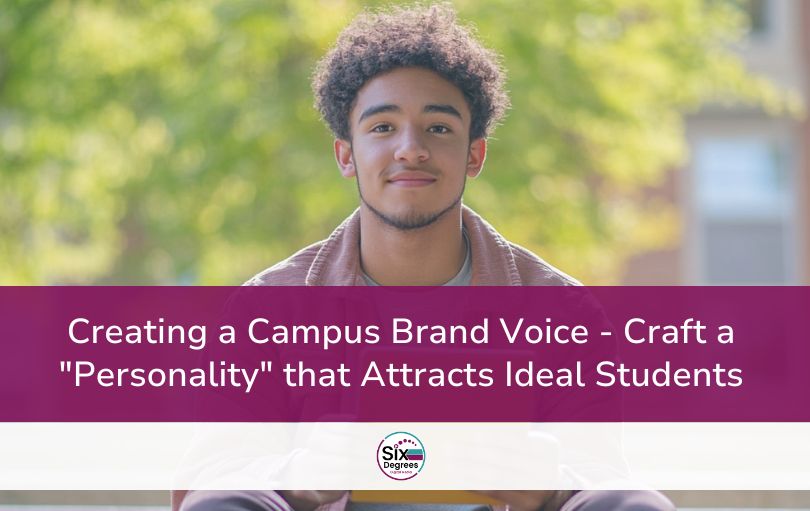Ever wonder why some marketing copy works while other copy falls flat? The secret is being able to get inside the head of who you’re speaking to and answering the questions they have, and sometimes it’s answering questions before they think of them.
The absolute best way to do this with potential students is by leveraging your current students’ thoughts.
Think about it. Students are living, breathing testimonials of your programs. They’ve got real motivations, face real challenges, and experience real transformations. Capturing their journey is like finding a goldmine of relatable content. It’s raw, it’s honest, and—most importantly—it speaks to the hearts of potential students and stakeholders alike.
So, where do we start? By sitting down with students at different stages of their educational journey—from the excitement of enrollment to the seasoned insights of alumni. It’s all about digging into their experiences and weaving those tales into your marketing copy.
Sounds intriguing, right? Buckle up; we’re about to get into the art of creating compelling copy that converts by utilizing student interviews.
When it comes to crafting compelling copy from student interviews, capturing insights at different stages of their journey is crucial. Let’s break down these stages to make sure our messaging resonates deeply and genuinely.
Enrollment Stage
Ah, the fresh enthusiasm of newly enrolled students! This stage is all about understanding initial motivations and expectations. Imagine sitting across from a student, hearing their story of why they chose your school and the program you offer. You want to go beyond “location”, was it a specific course in the program, was it something only your campus offers? Or perhaps it was the “extras” that your institution has such as resume assistance, job placement, etc.
Getting into these details helps you create content that mirrors their thoughts and feelings. It’s not just about stating the features of your program, but also showcasing how those features align with prospective students’ dreams and aspirations. Remember, it’s the “why” behind their choice that gives your copy its magnetic pull.
During Studies
Once the honeymoon phase is over, students get into the nitty-gritty of coursework, projects, and perhaps a few late-night study sessions fueled by caffeine. This stage is ripe with experiences and challenges that can bring authenticity to your marketing copy.
Interviewing students about their day-to-day experiences provides rich material. Did they find certain classes particularly inspiring? Were there unexpected challenges they had to overcome? Highlighting these elements in your content not only adds relatability but also builds trust—showing prospects that you understand their journey inside and out.
For instance, you might learn about how a student overcame initial doubts about a challenging subject thanks to an engaging professor or supportive peer group. Including these narratives in your copy can provide reassurance to prospective students facing similar fears.
You can consider doing a series on a “day in the life” of a student each semester or more than one depending on how many programs you offer. Showcase these stories on social media, YouTube, your blog, and emails.
This is where we come full-circle, the impact of education on career paths. Alumni reflections are invaluable as they offer tangible proof of the program’s effectiveness.
Interviewing graduates about how their education has shaped their professional lives offers compelling testimonials. Maybe an alum landed a dream job because of specific skills they acquired during their studies. Or perhaps they felt prepared to tackle industry challenges thanks to real-world projects incorporated into the curriculum.
These stories serve as powerful endorsements, demonstrating real-life outcomes that prospective students can aspire to. They’re not just reading about potential benefits; they’re seeing them through the experiences of those who have walked the path before them.
By breaking down these stages and gathering insights at each point, you’re not just creating marketing content; you’re weaving together stories that speak directly to your audience’s hearts. Next up, we’ll look at how to analyze and segment this data by program to make sure your messaging hits all the right notes!
Okay, you’ve gathered your student insights. Now comes the fun part—analyzing and segmenting this data to make your marketing copy truly shine. Let’s break it down step by step.
Program Specific Analysis
Imagine if you talked to students across different programs and threw all their insights into one big pot. You’d end up with a delicious but confusing stew. To make the most out of these interviews, you need to categorize data by program. Each program has its unique set of motivations and outcomes, and recognizing these differences is key.
For instance, a student in a nursing program might be driven by a passion for patient care and have stories about clinical rotations. On the other hand, a student in a tech program could be fascinated by innovation and have experiences related to coding marathons and hackathons. By organizing data program-wise, you can address these unique narratives effectively.
Why does this matter? Tailored messaging. When your marketing copy speaks directly to the specific experiences and motivations of students within a particular program, it resonates more deeply. And let’s face it, who doesn’t want to feel understood on a personal level?
Identifying Common Themes
While each program is unique, some narratives and themes tend to pop up across the board. Your job is to spot these common threads. Maybe students across different programs felt particularly supported by your faculty or were blown away by the campus culture.
Identifying these overarching themes allows you to create a cohesive message that highlights your institution’s strengths while still acknowledging the unique elements of each program. For example:
- Supportive Faculty: Almost every student loves a teacher who goes the extra mile.
- Community Feel: A close-knit community can be a huge draw for prospective students.
- Real-World Experience: Practical applications of classroom knowledge resonate universally.
By weaving these common themes into your marketing copy, you’re not just selling a program; you’re selling an experience—a cohesive narrative that binds individual stories into a larger, compelling picture.
By analyzing and segmenting your data meticulously, you’re able to craft messages that not only speak directly to the heart of each prospective student but also build the overall perception of your programs. Next, let’s dive into crafting compelling copy based on these rich insights from student journeys!
Now that you’ve segmented your data, it’s time to craft some killer copy. We’re talking about words that not only inform but also connect and convert. Here’s how to turn those student insights into compelling narratives.
Transformation Stories
Everyone loves a good transformation story. Think of it as a “before and after” tale but with a lot more heart. Use student testimonials to narrate their journey from enrollment to post-graduation. These stories illustrate the tangible benefits of your programs, making your marketing copy much more persuasive.
For example, start with a student’s initial motivations and concerns when they first enrolled. Maybe they were unsure about their future or felt unprepared for college-level work. Then, highlight their experiences during their studies—how they faced challenges, what they learned, and how they grew. Finally, bring it home with their post-graduation success, showing how your program equipped them to excel in their careers.
By weaving these elements together, you’re not just telling a story—you’re showing potential students what’s possible. This approach makes your copy relatable and inspiring.
Let’s be real: no journey is without its bumps. Addressing the specific challenges students face during their studies adds authenticity to your copy. When you acknowledge these pain points and show how your program offers solutions, you build trust.
For instance, if students struggle with balancing coursework and part-time jobs, highlight resources like flexible class schedules or supportive faculty that help them manage their time better. Or if they’re worried about job prospects after graduation, showcase alumni success stories and the career services you offer.
The key is to strike a balance between empathy and resolution. Acknowledge the problem, then demonstrate how your program effectively addresses it. This approach reassures prospective students that you understand their concerns and have the tools to help them succeed.
By focusing on these authentic stories and addressing specific pain points, you’re crafting content that speaks directly to prospective students’ hearts and minds. It’s not just about selling a program; it’s about connecting with real people through genuine experiences.
Recap
Leveraging student interviews to craft your marketing copy isn’t just smart—it’s transformational (Yes, it’s a repeat, but it’s worth it!). From understanding initial motivations to capturing post-graduation successes, these authentic stories breathe life into your content. They make it relatable, trustworthy, and downright compelling.
Ready to take the next step? Start interviewing your students today! Capture their journeys, address their pain points, and turn those insights into powerful marketing messages. And hey, if you’re feeling overwhelmed or unsure where to start, we’ve got your back.
Schedule a free consultation with us to analyze and utilize these invaluable insights. Let’s create compelling copy that converts, together.
